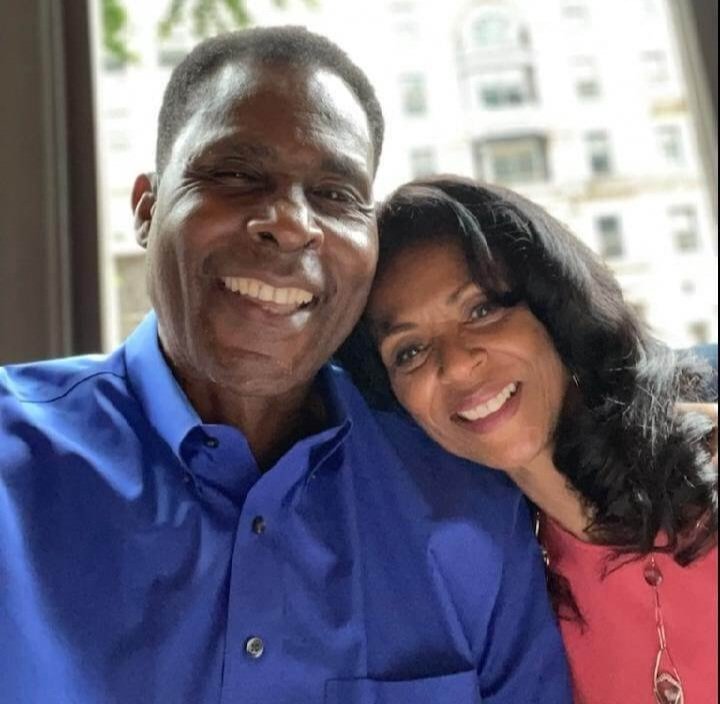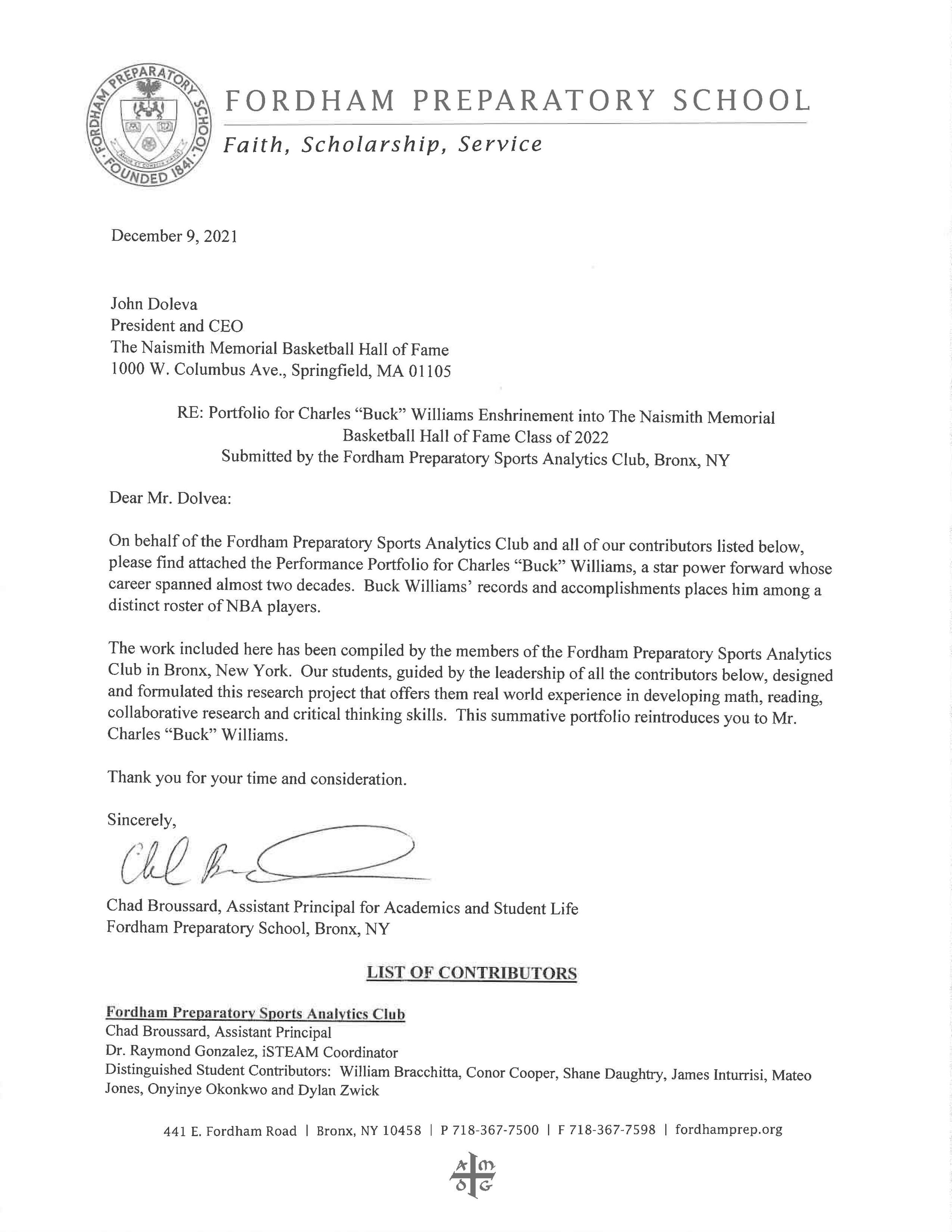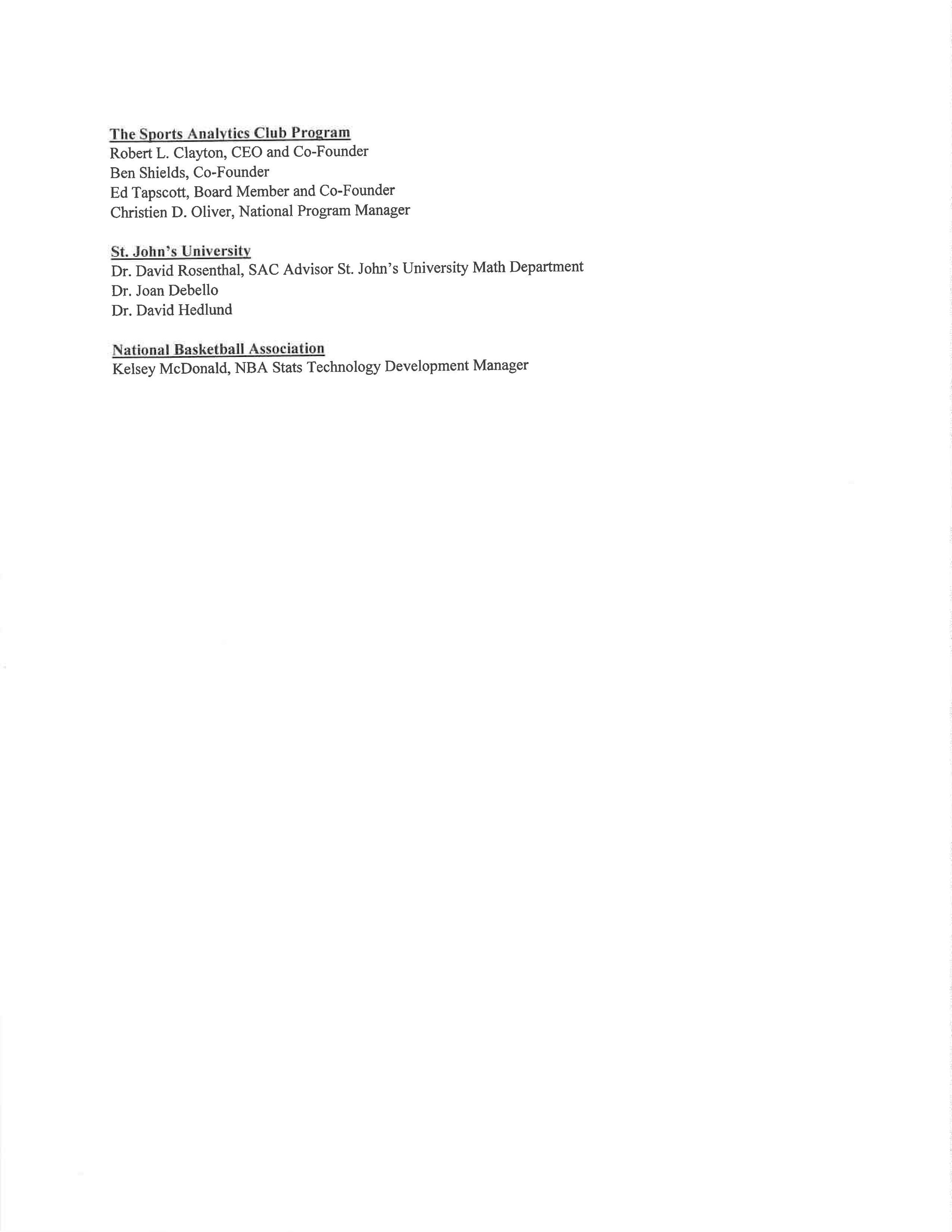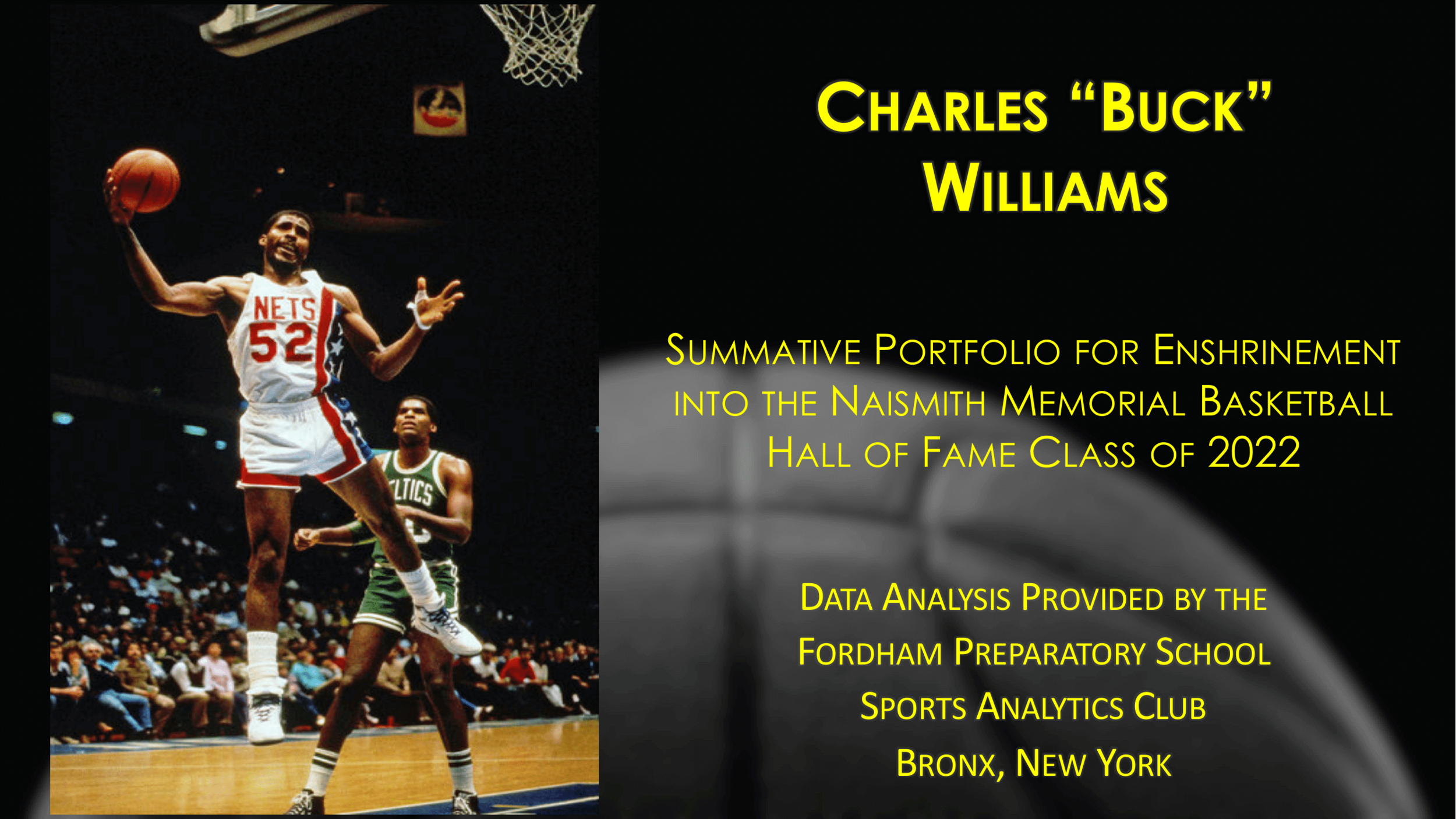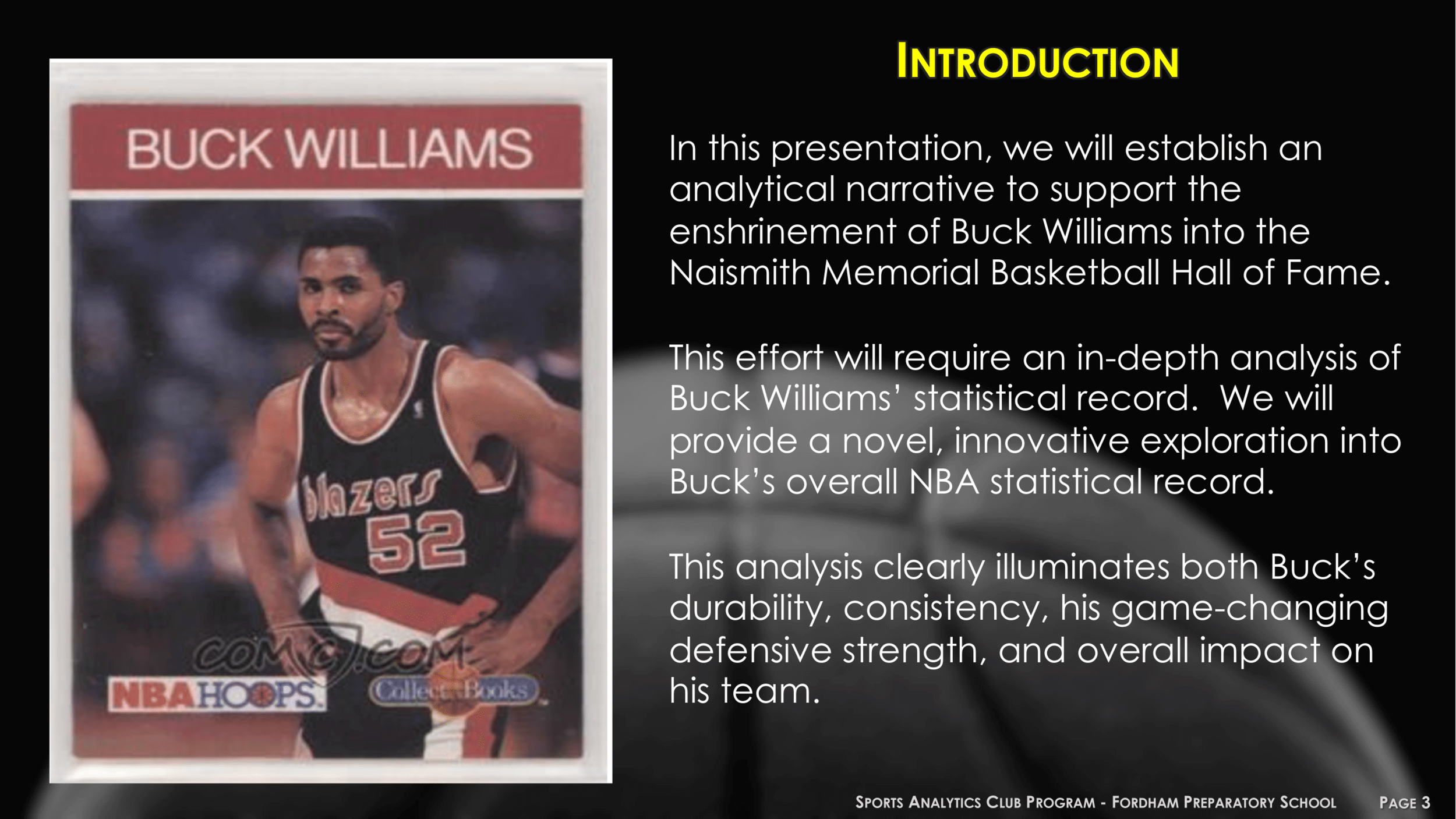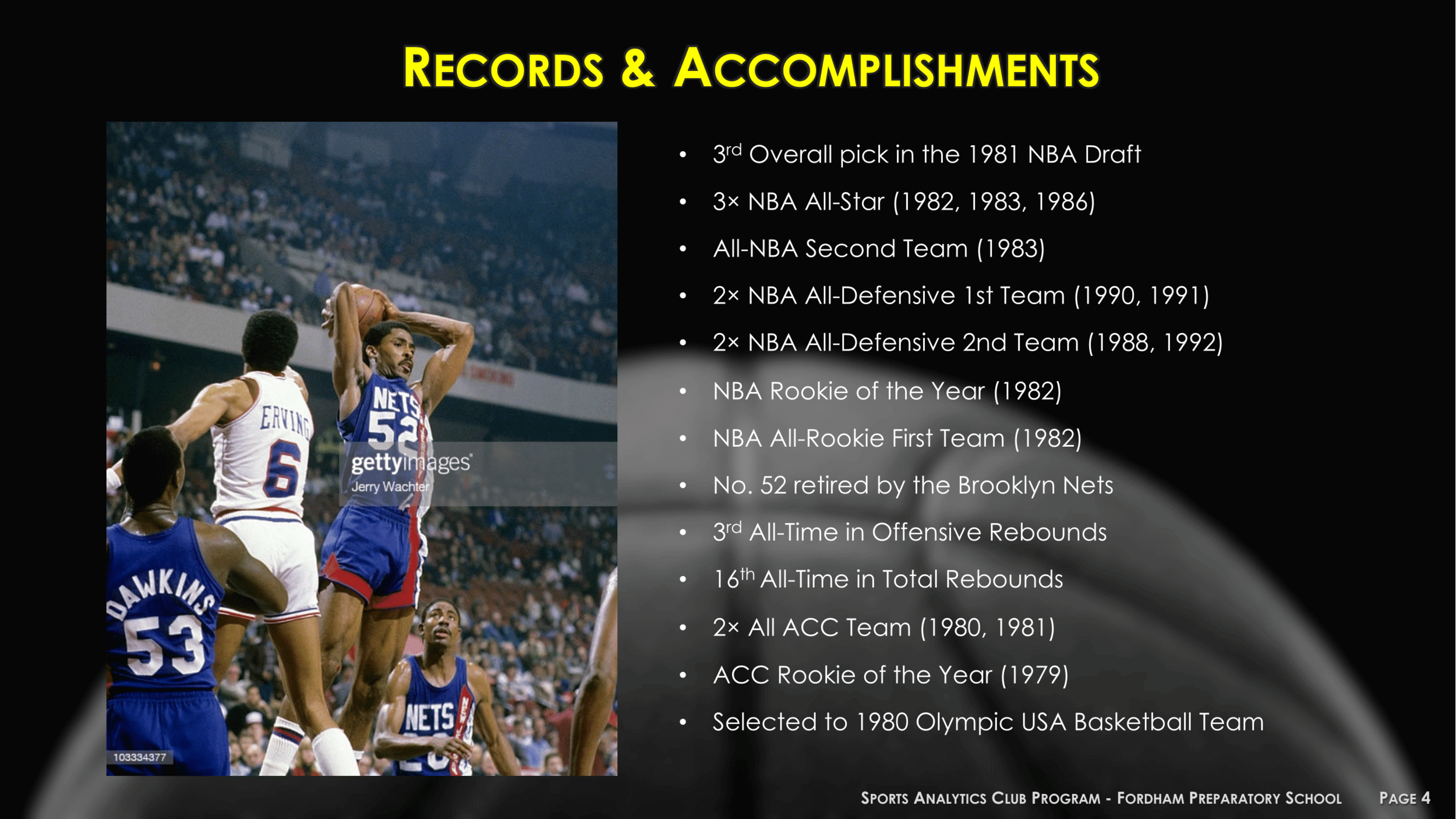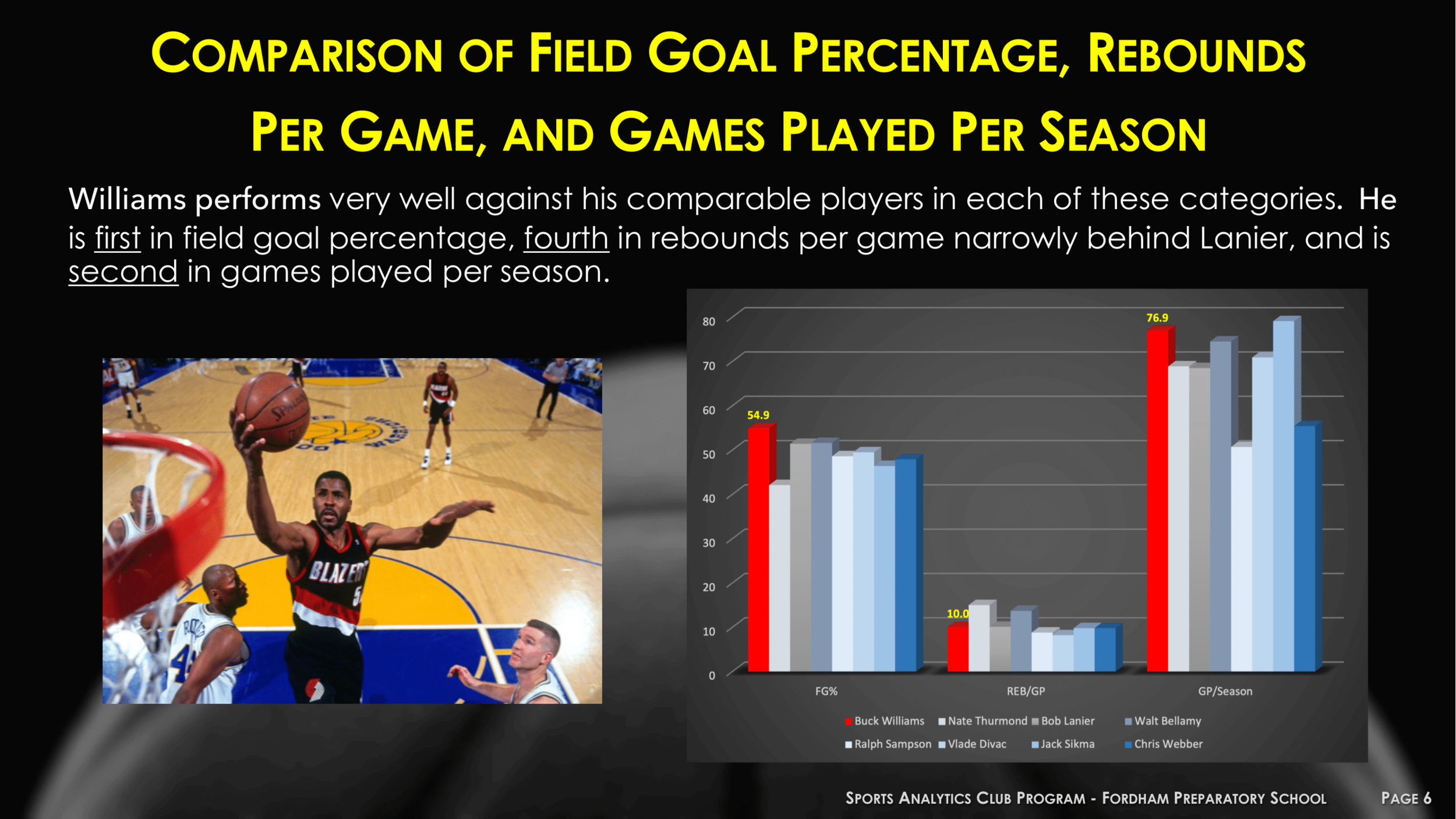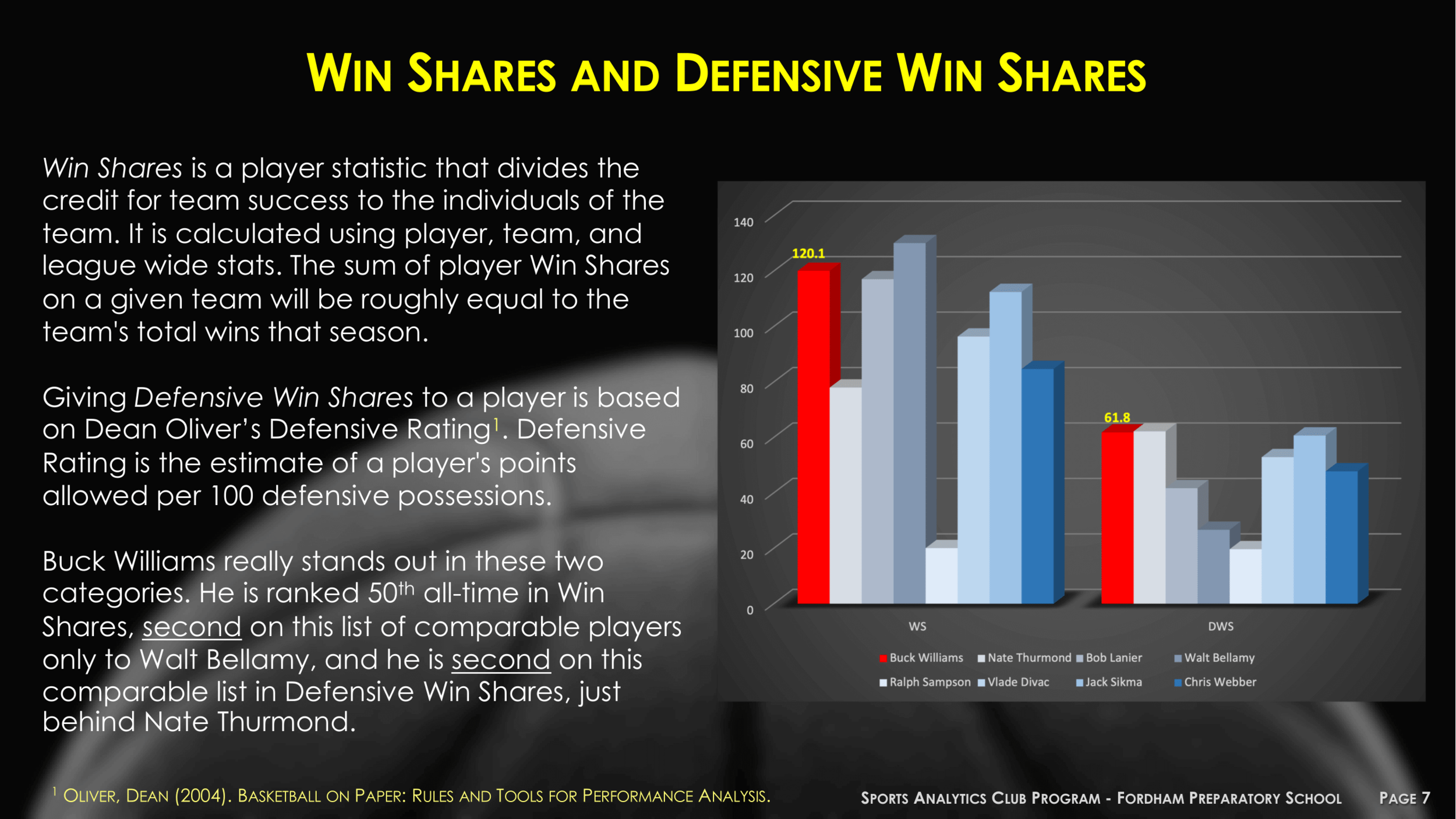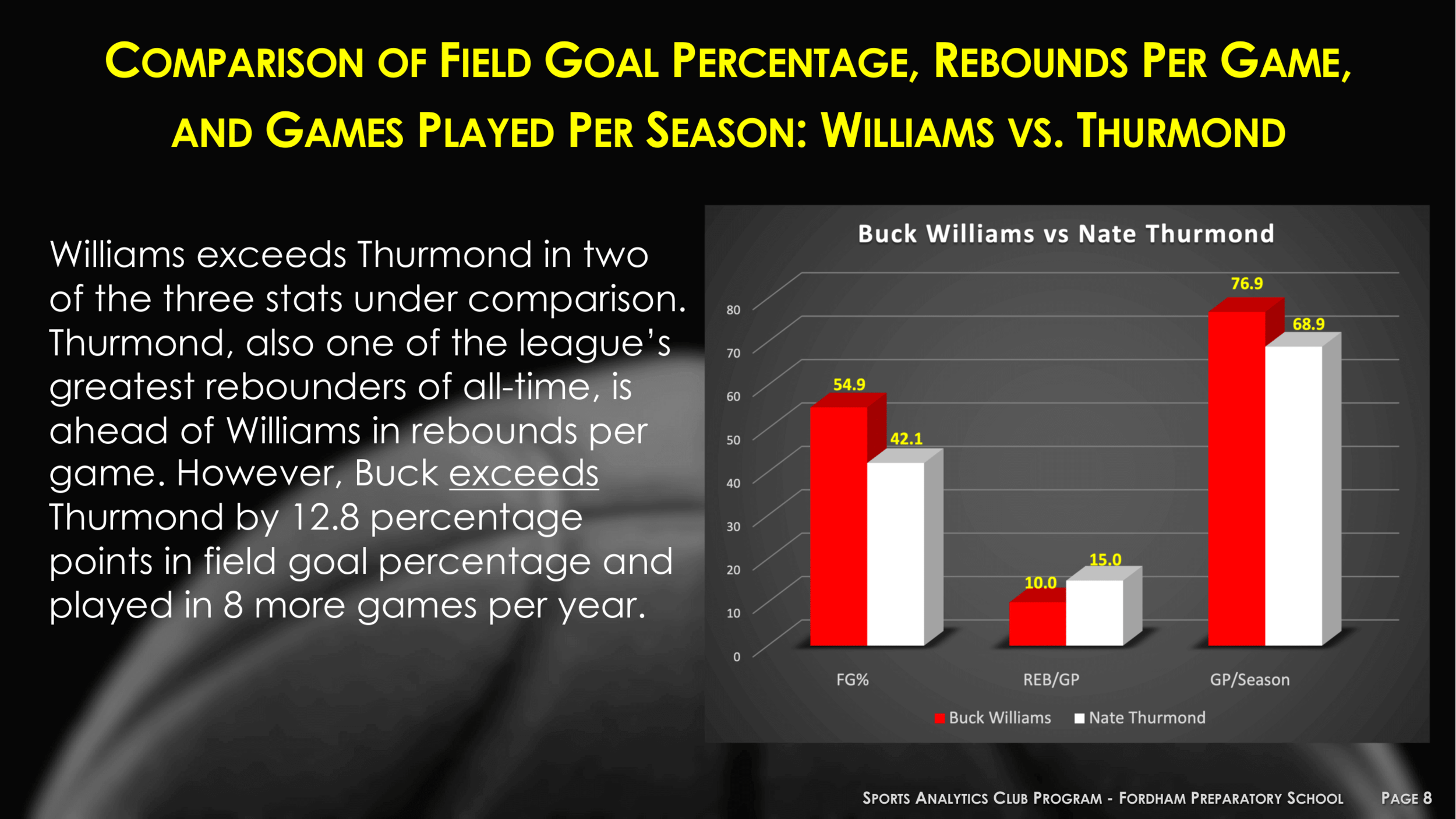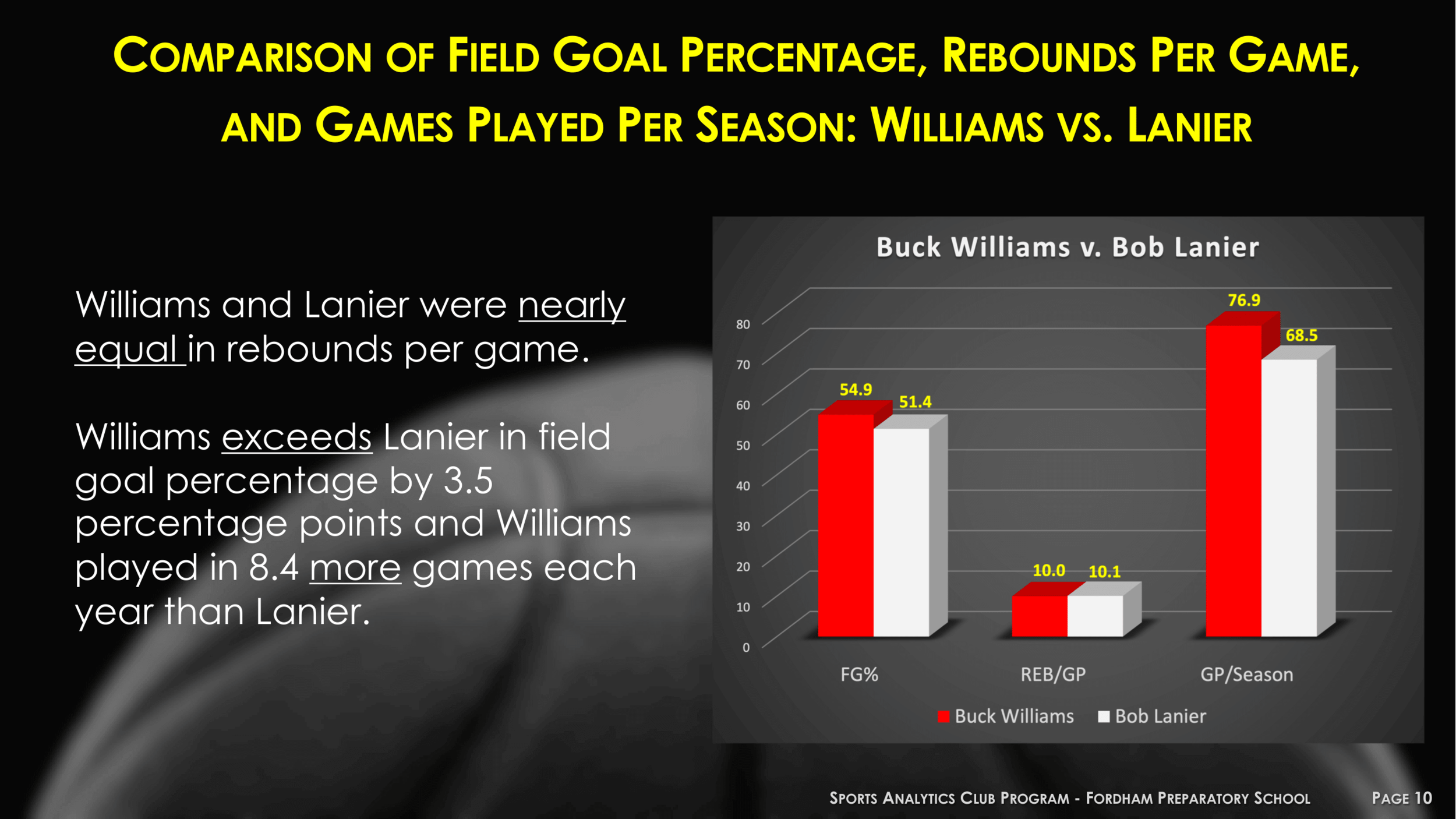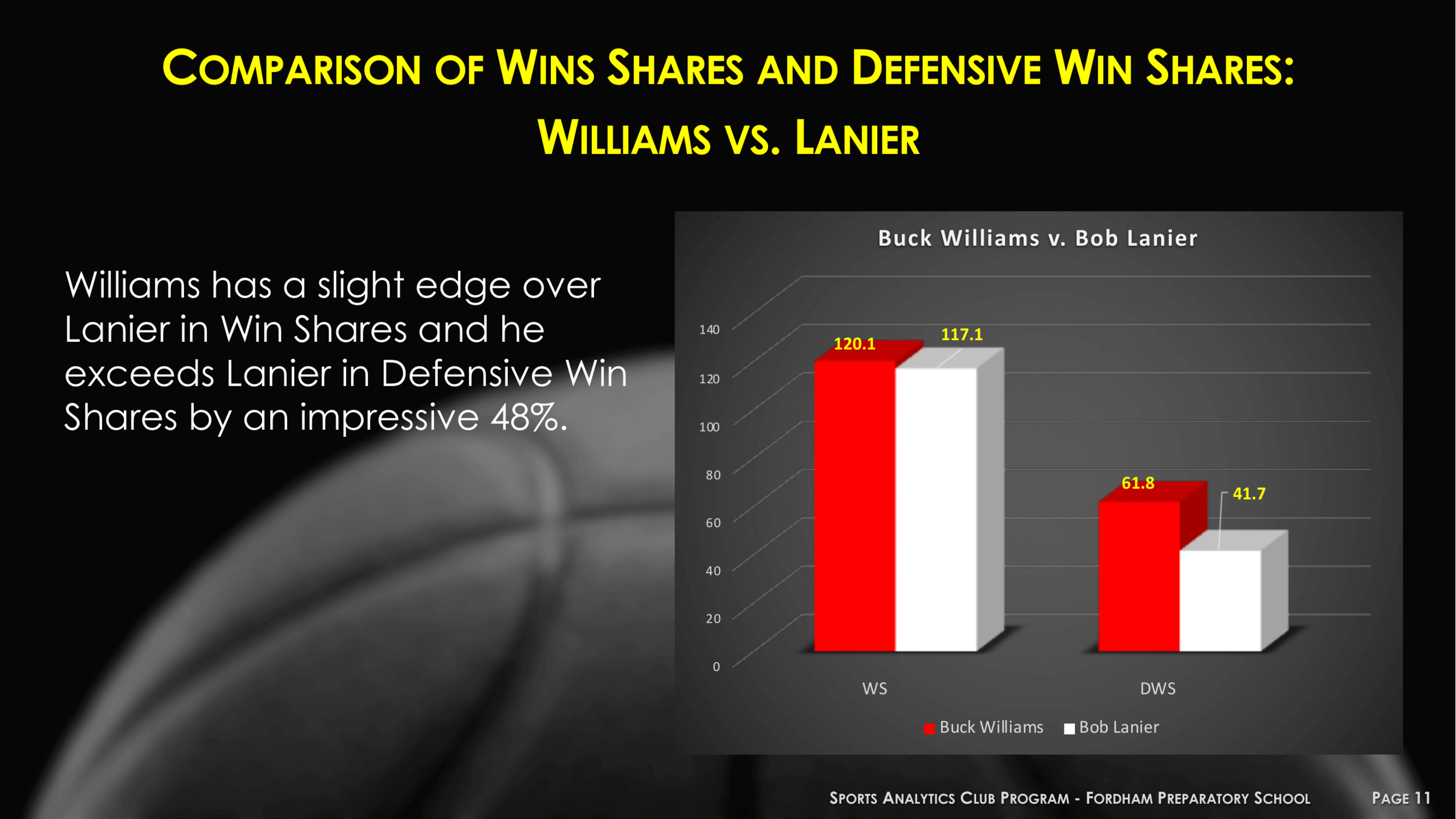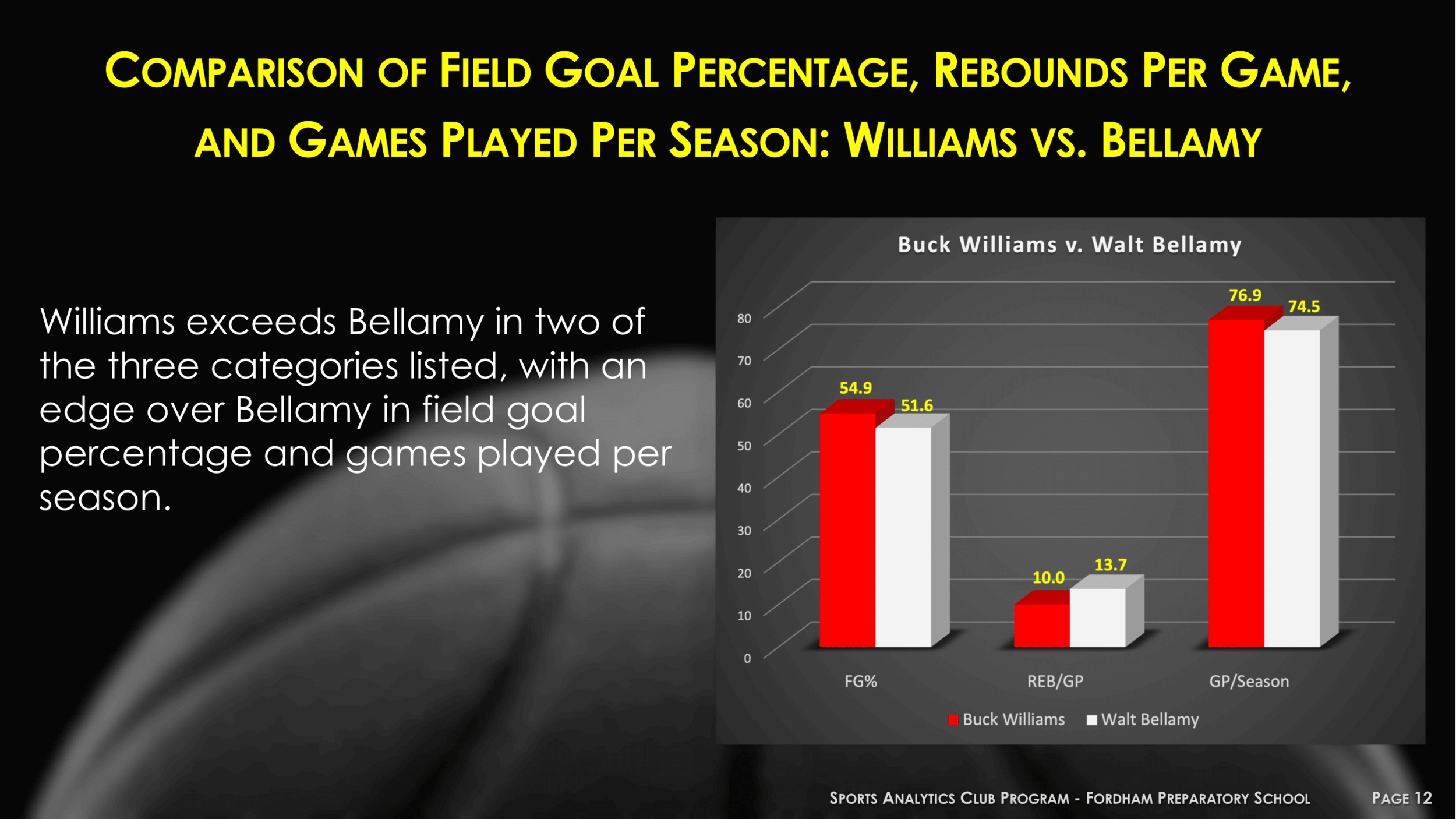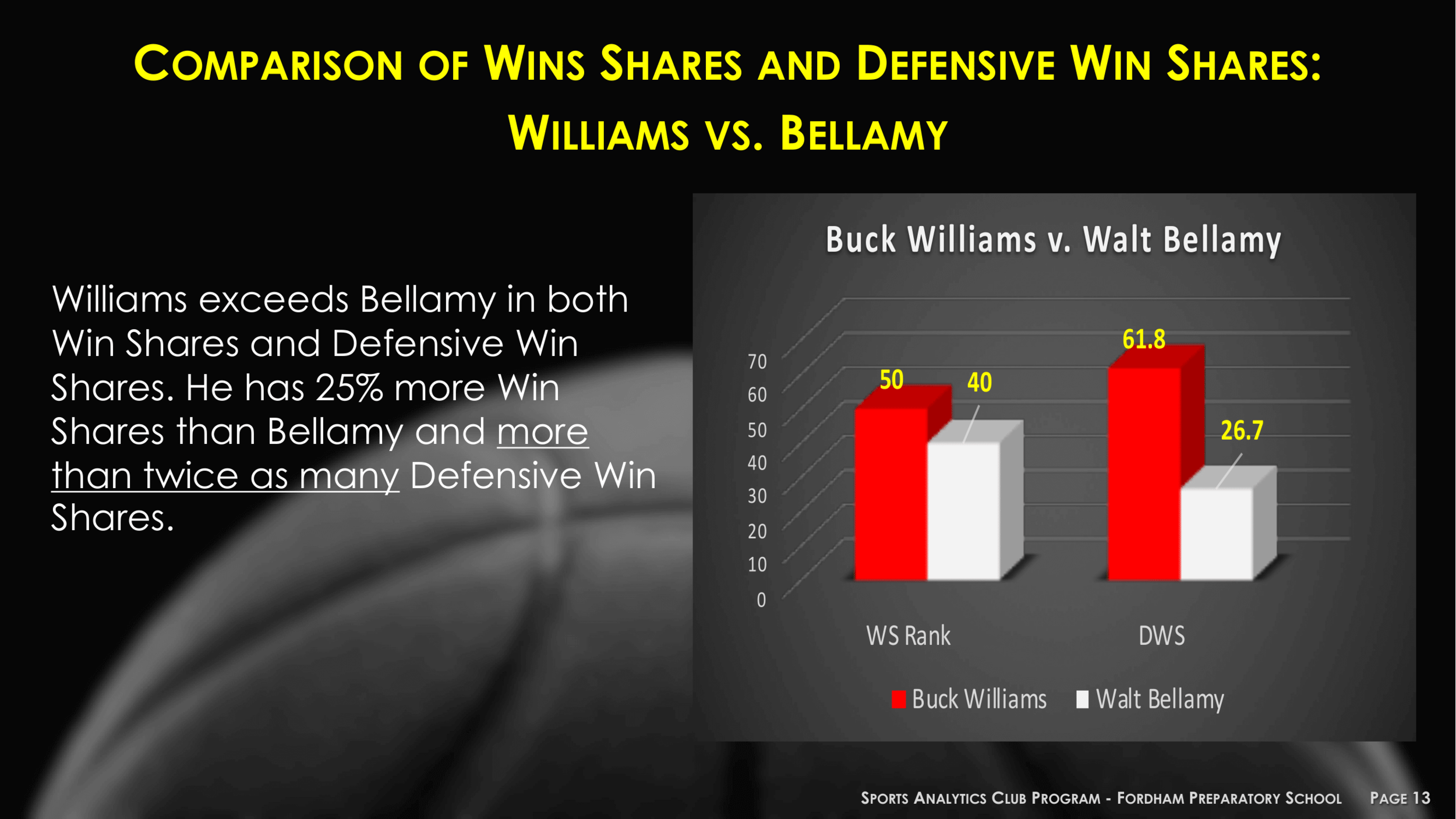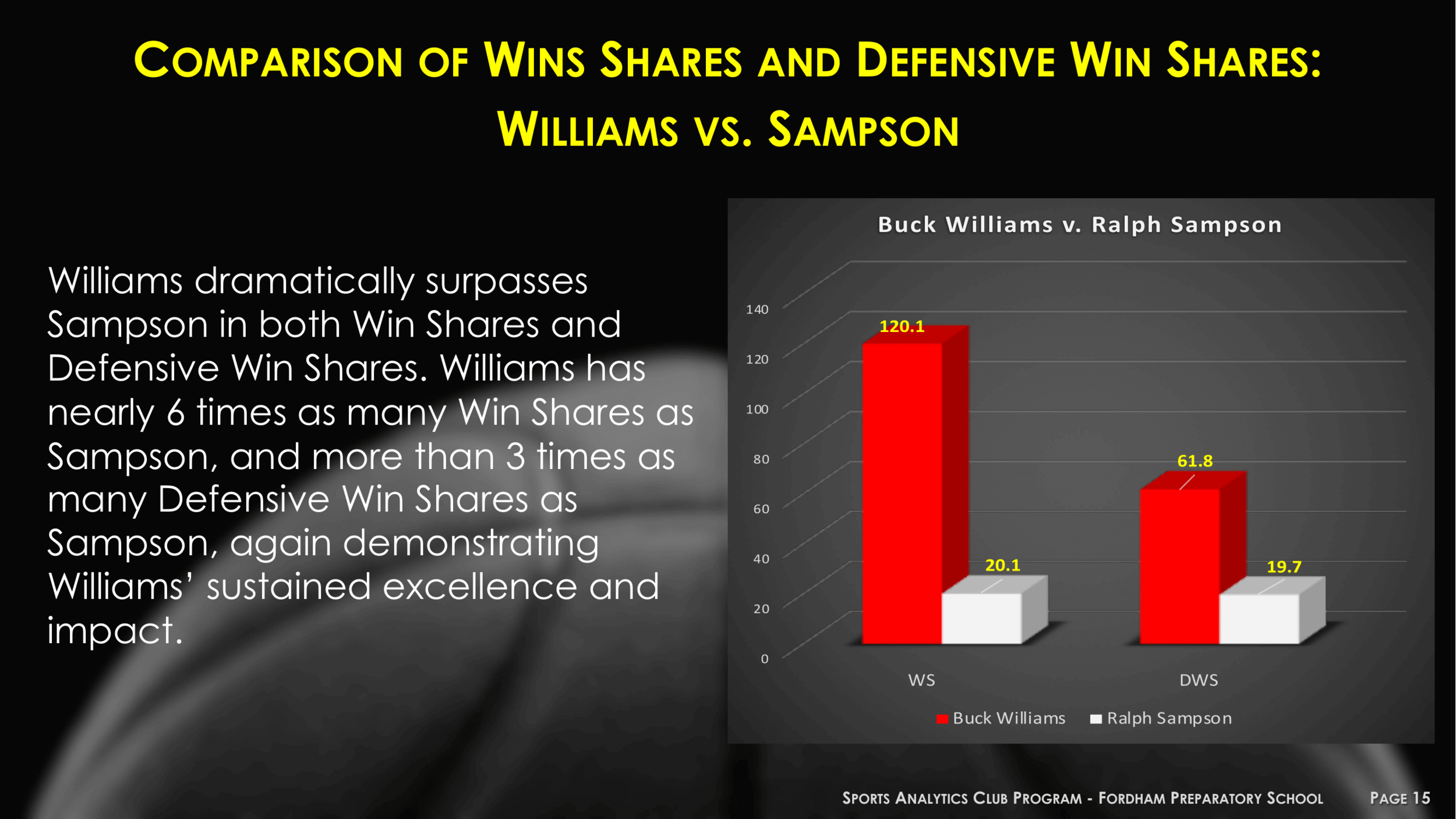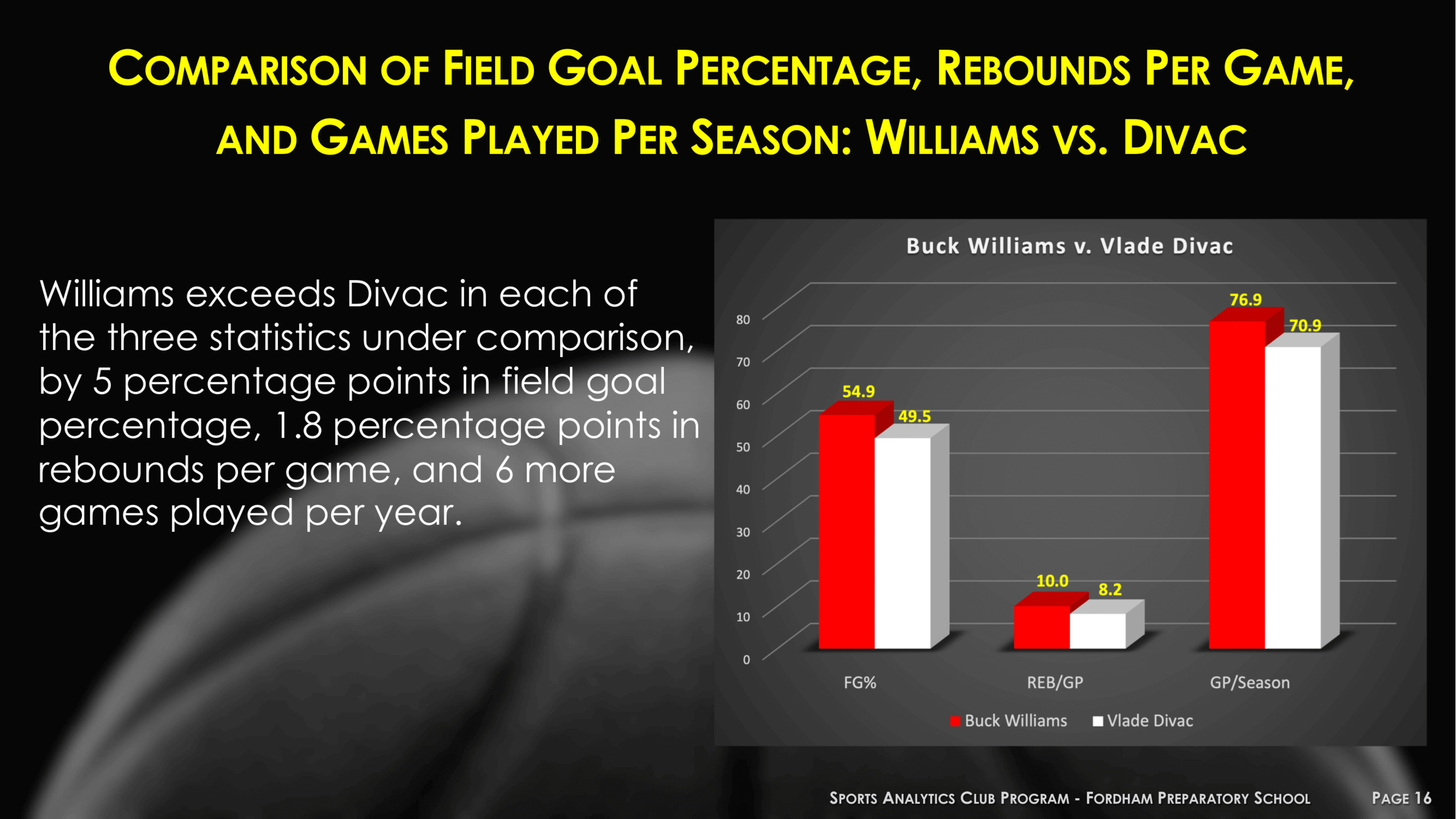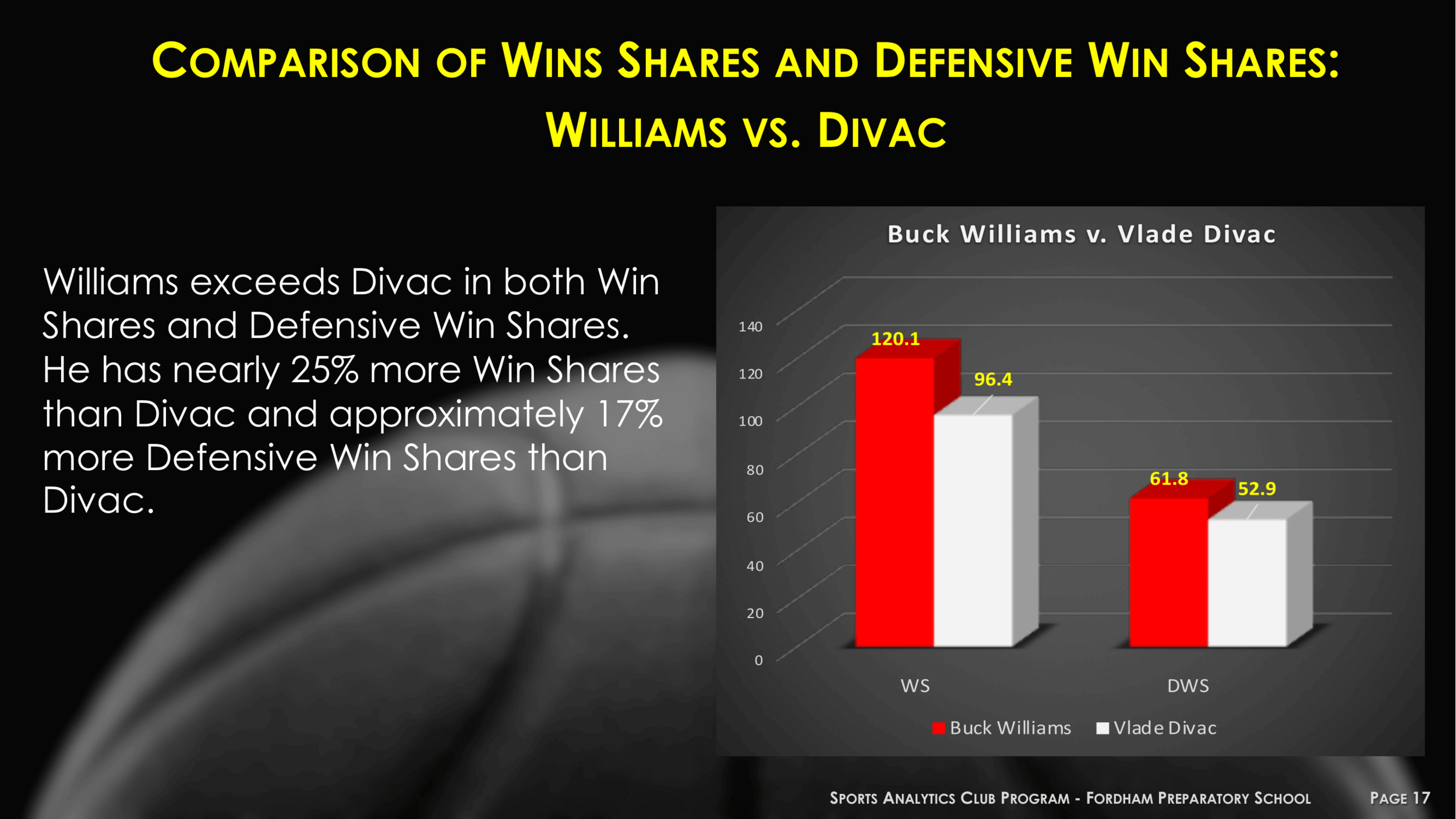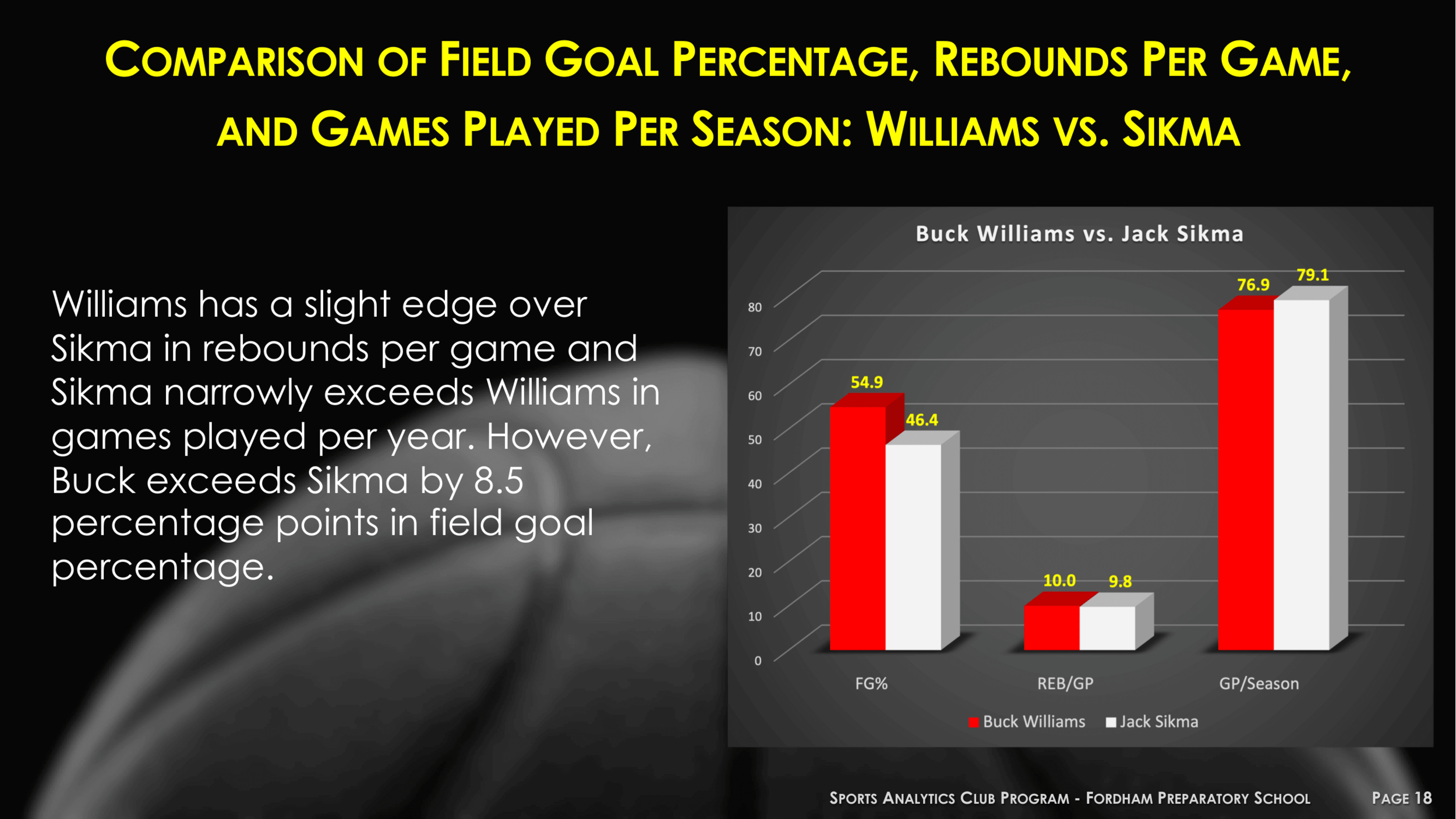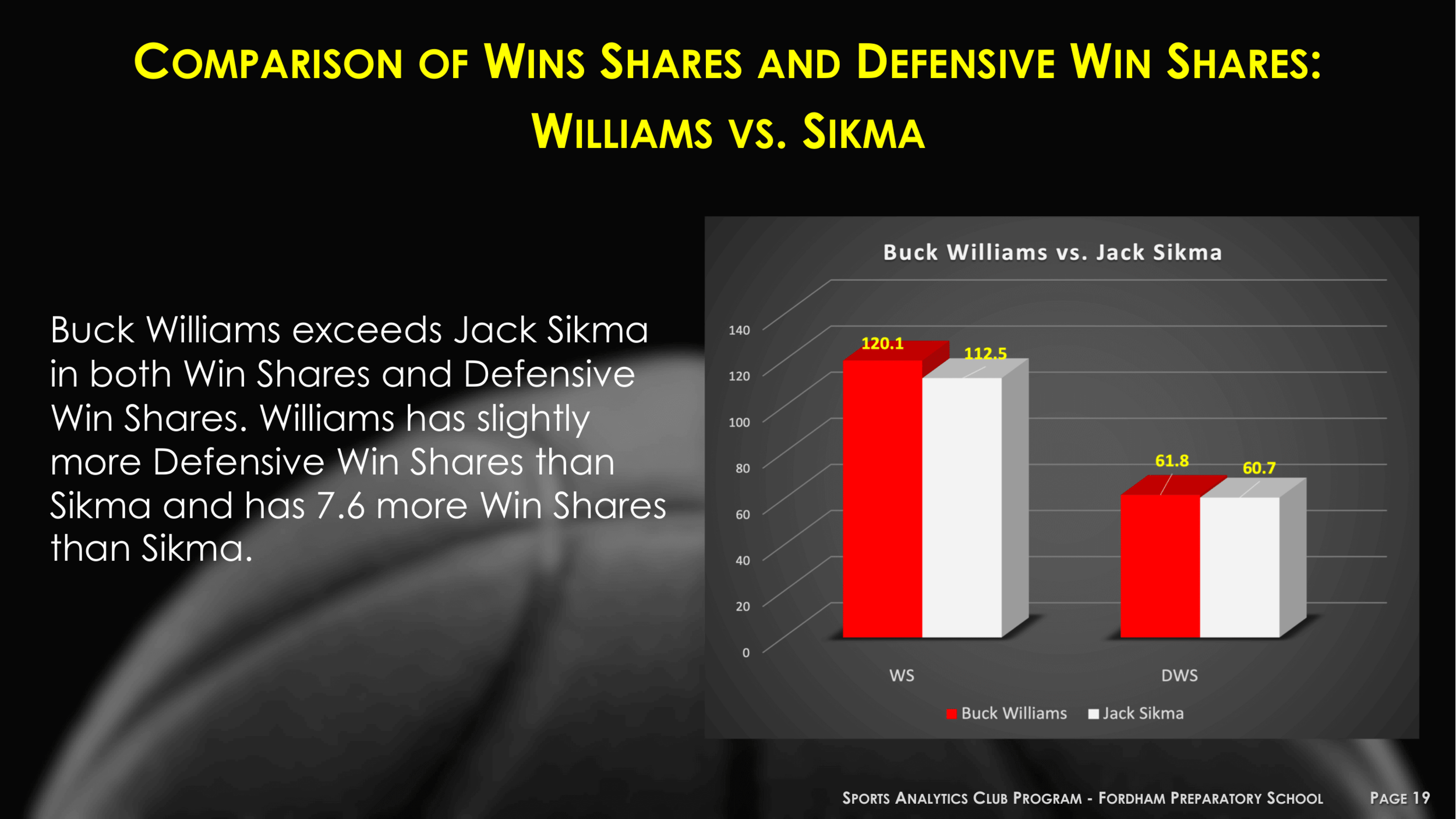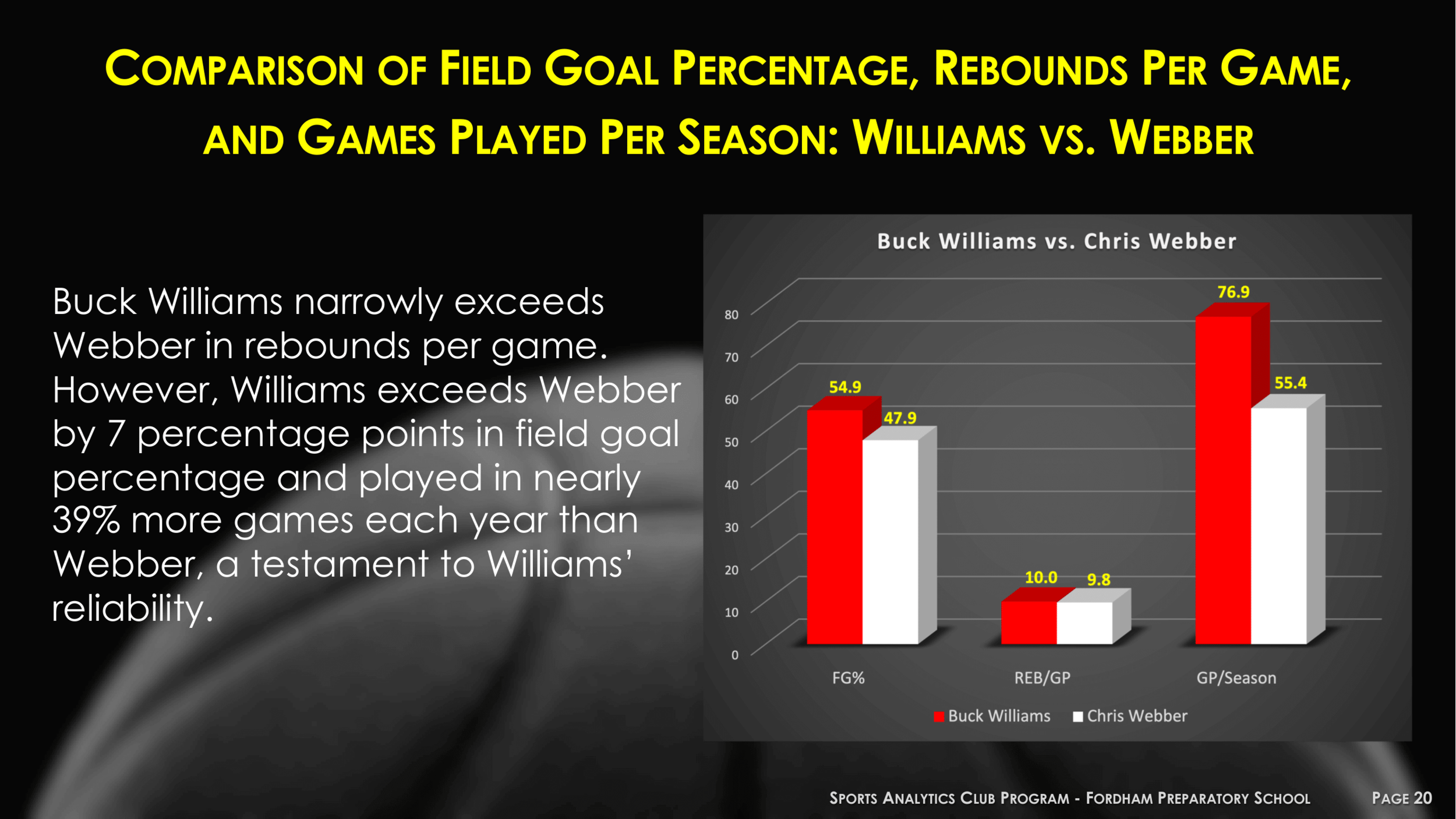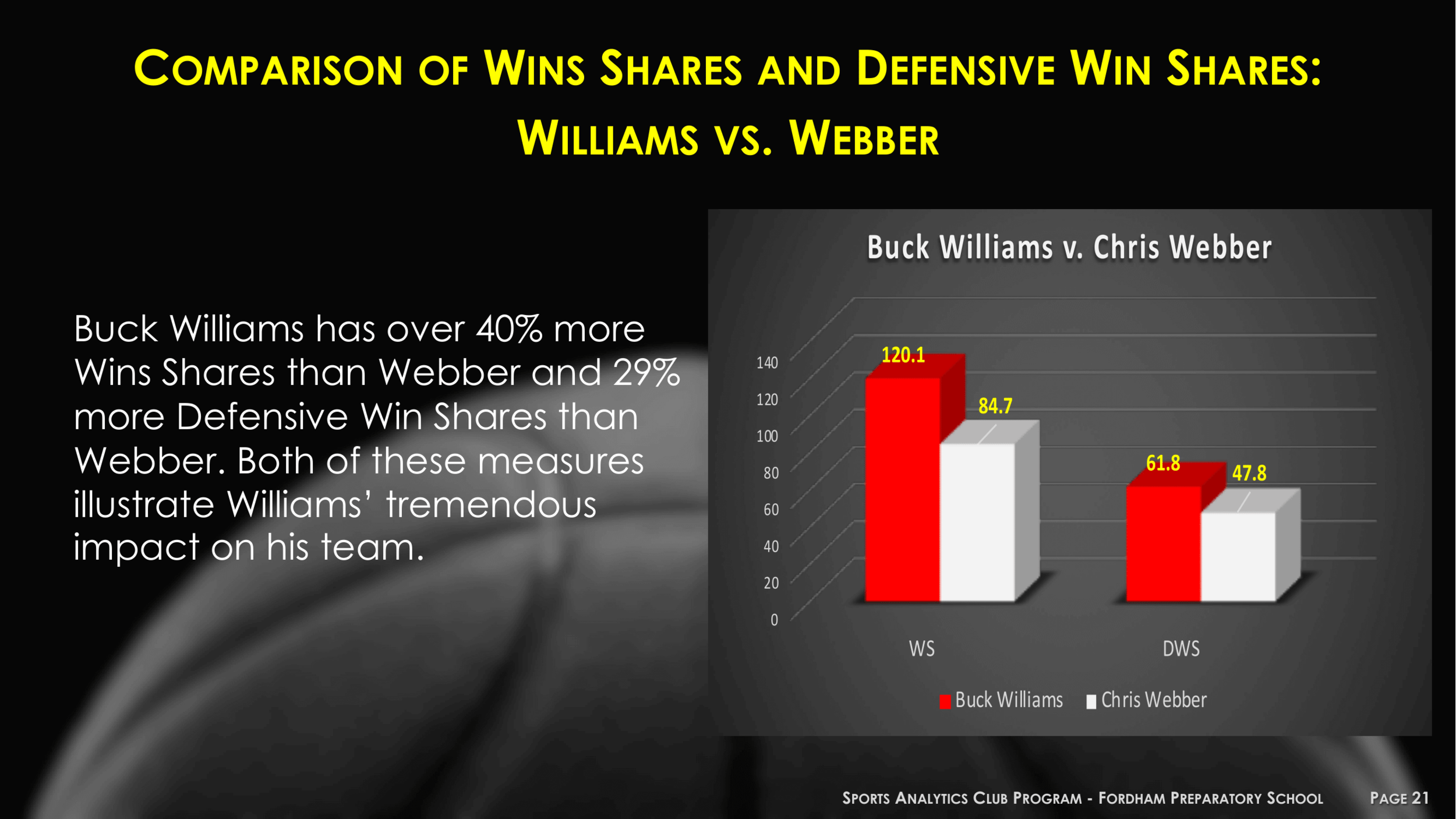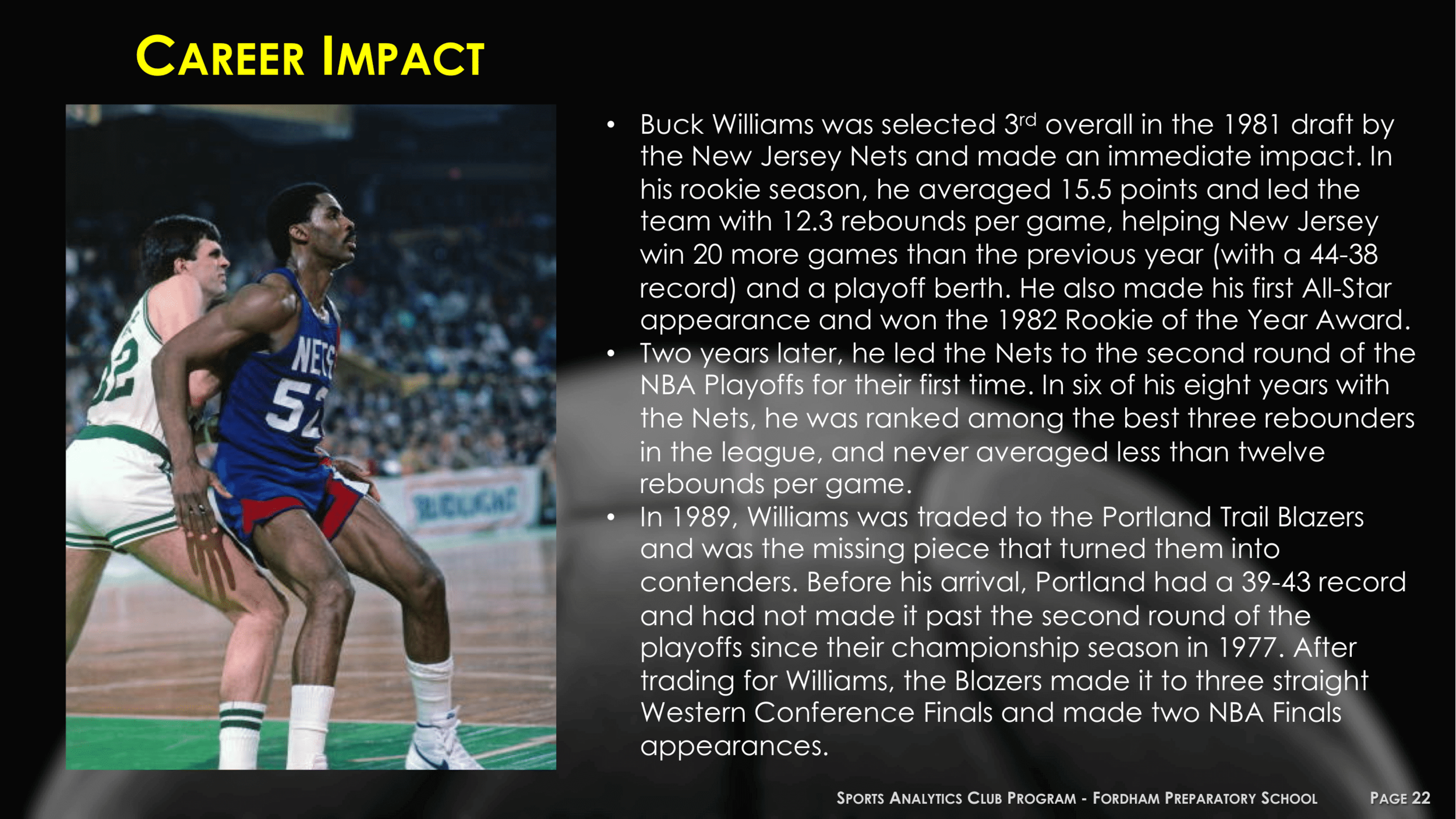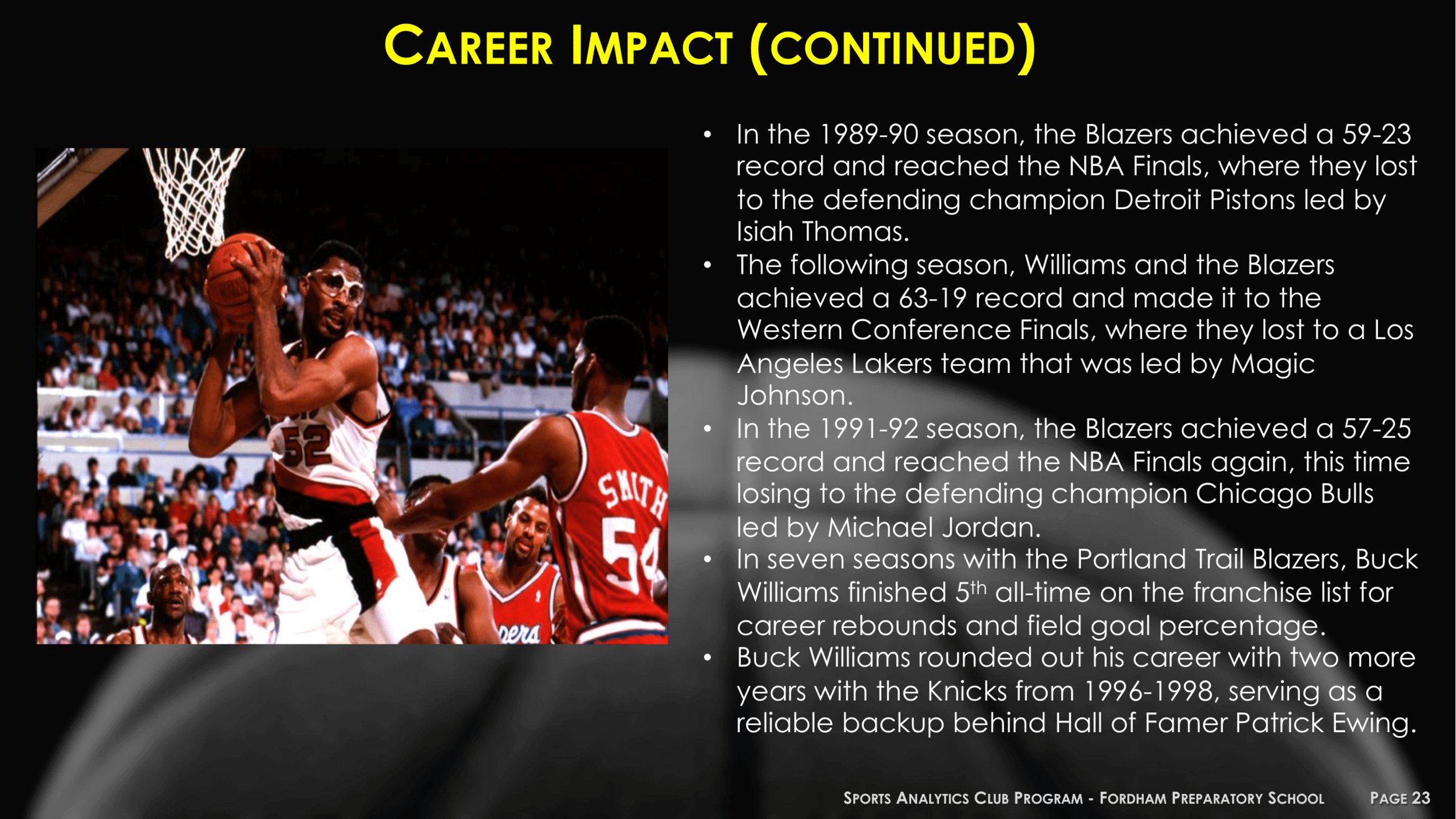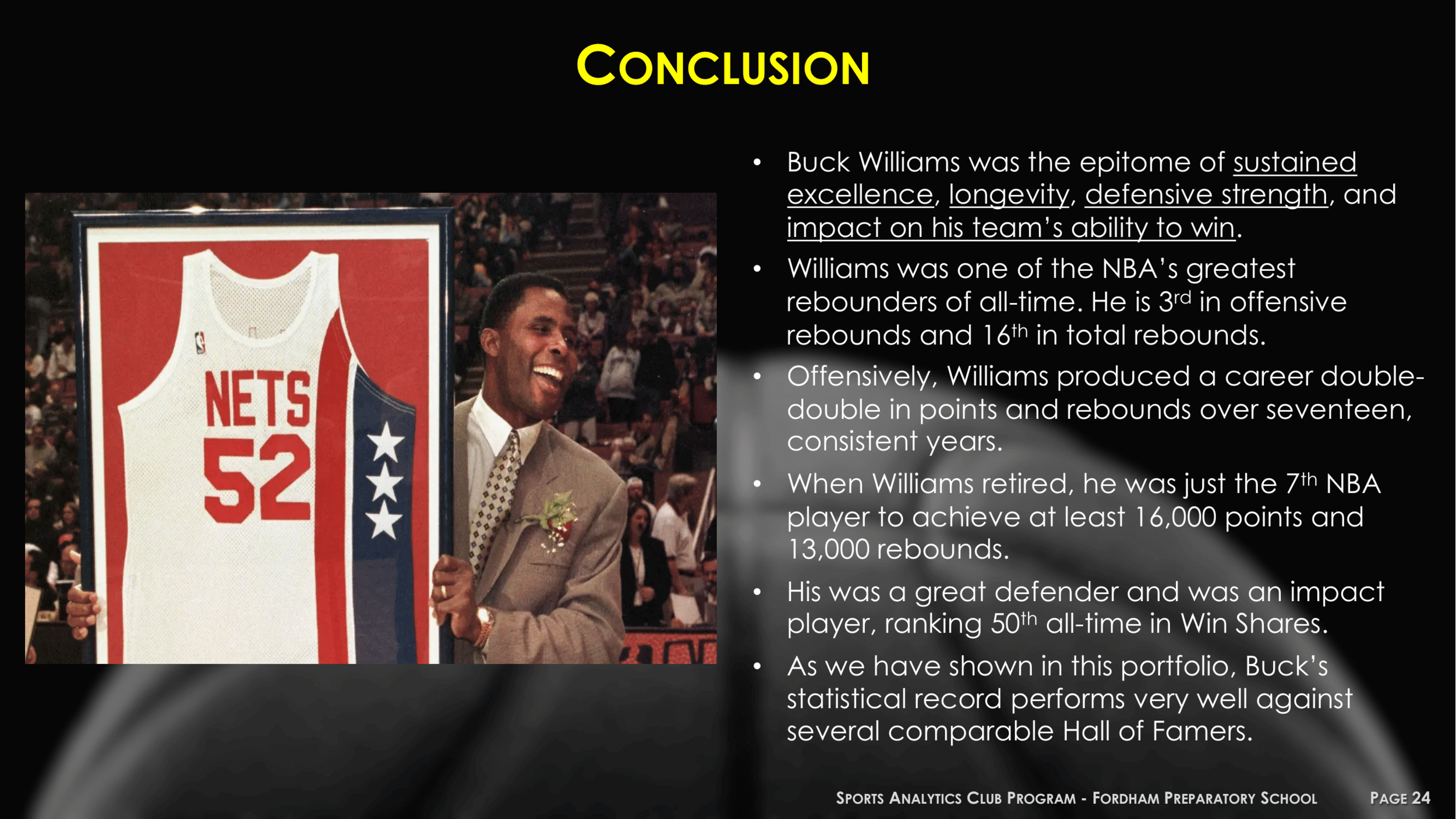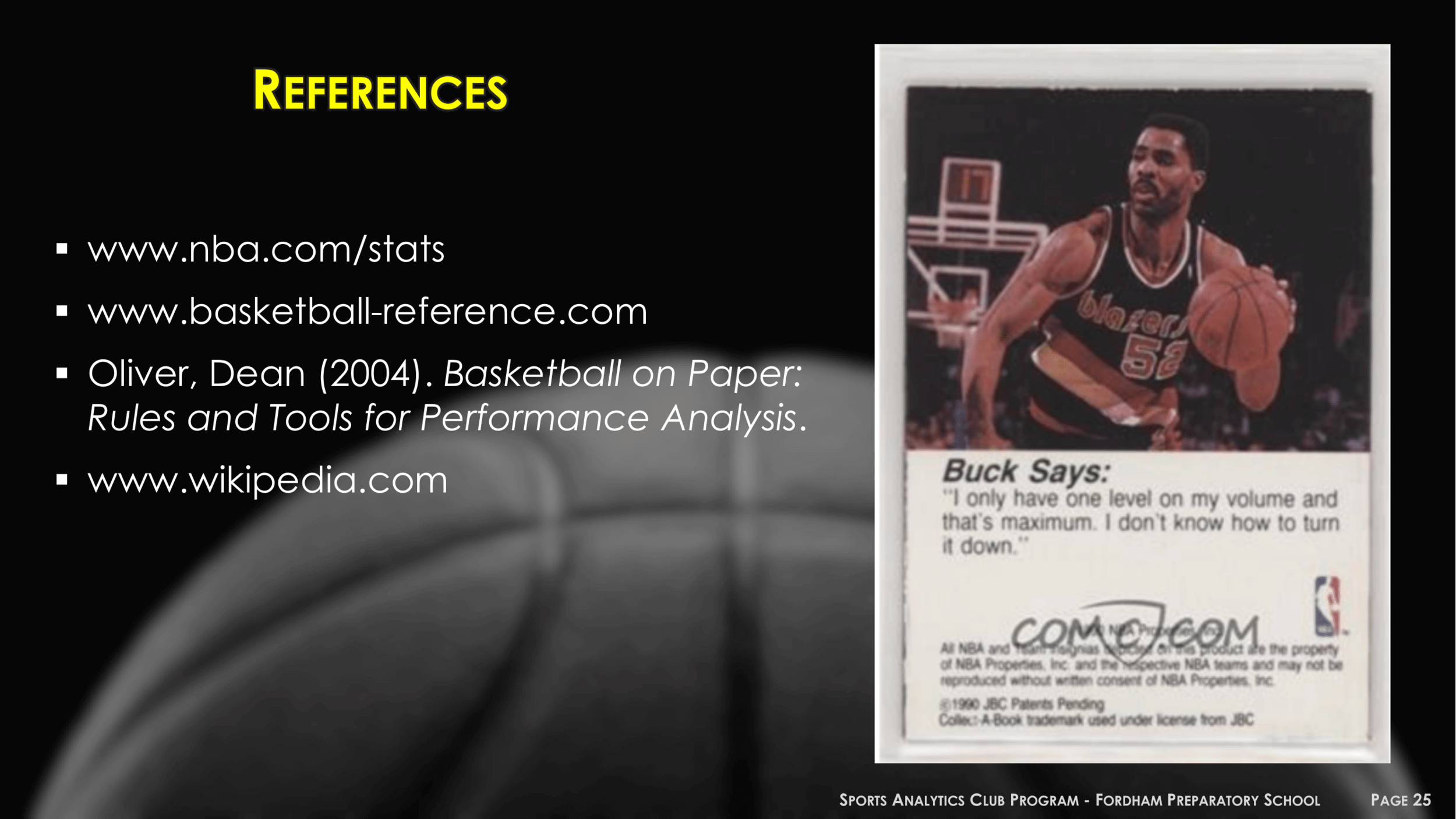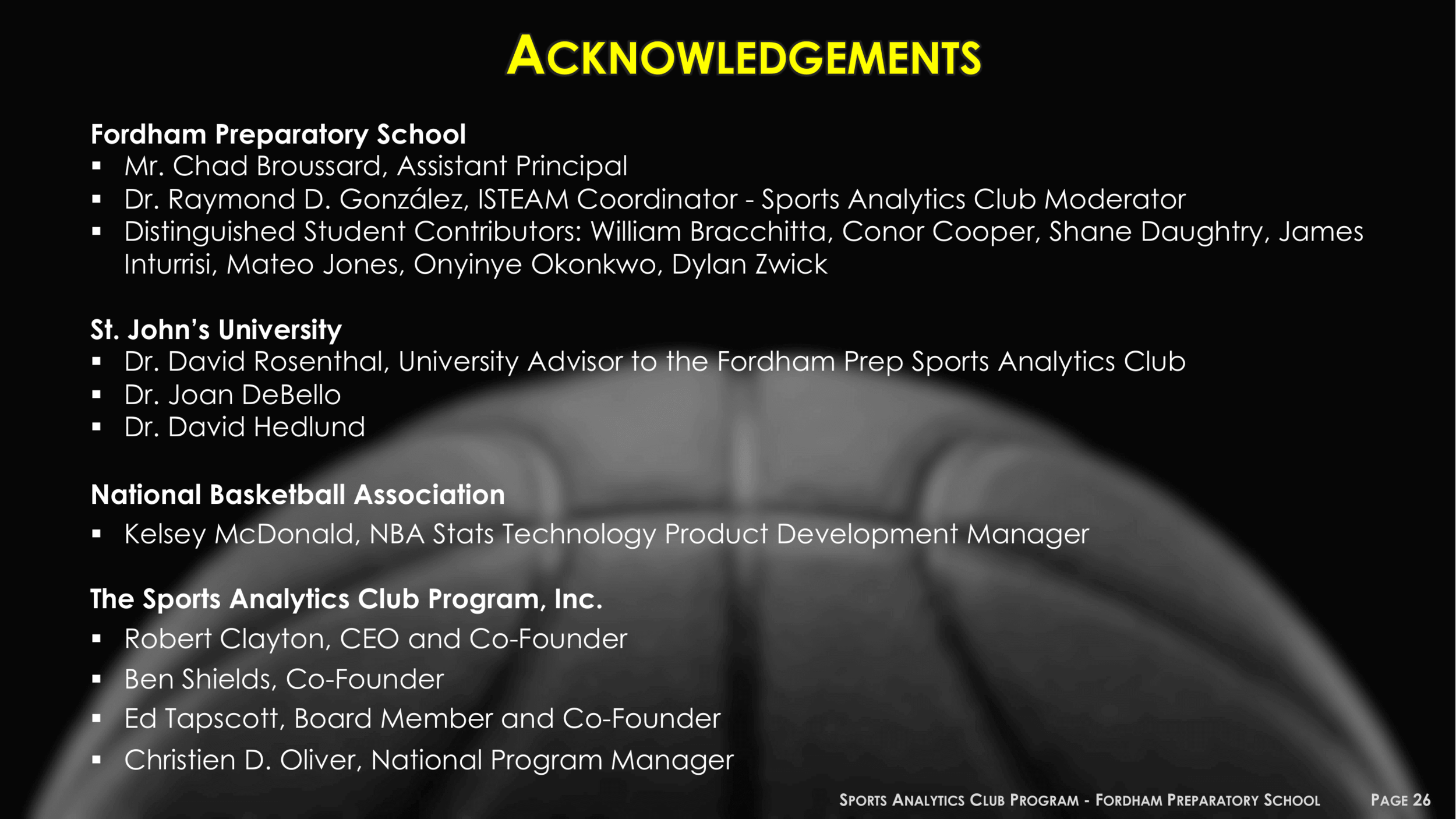Should Buck Williams be a Hall of Famer? Says Fordham Prep’s sports analytics club: ‘Yes’
Updated 12/28/2021 12:05 PM
Those in Portland in the 1990s recall Charles Linwood “Buck” Williams as the lunch-bucket power forward whose acquisition proved the missing link in the Trail Blazers’ rise to NBA Finals in ’90 and ’92.
A very good player, most would agree. Worthy of induction into the Naismith Basketball Hall of Fame? Not so sure.
That’s what I thought, at least, as I viewed the career of one of my favorite players ever to don a Blazer uniform.
Then Buck forwarded me a “summative portfolio” of data analysis designed to promote his candidacy for the Hall of Fame, prepared by the sports analytics club at Fordham Preparatory School in the Bronx, N.Y.
After reading the 25-page report prepared by a group of 16 high school students, which used analytics to make its case, I have shifted by thinking from “probably not” to “maybe.”
At the least, it is a formidable piece of work that will be presented to the 24 voters for the Hall of Fame, especially in that the youths who put it together had no experience at all in data analysis.
“The kids did a great job with it,” says Williams, now 61, in a recent phone conversation. “I was impressed.”
Buck didn’t ask for the lobbying efforts from the student group.
“Over time, I thought I would have an opportunity to be a Hall of Famer, but I’ve never been a self-promoter,” Williams says. “It was kind of difficult for me to allow (the sports analytics club) to do this on my behalf. But it was cool to see what they came up with.”
Buck learned of the club’s project through a friend, Robert Clayton, who is CEO and co-founder of The Sports Analytics Club Program, Inc. The Harvard-educated Clayton is partner in a law firm in Washington, D.C., but says he runs the non-profit SACP “pretty much full-time.”
This year, 17 schools in the Eastern U.S. are operating sports analytics clubs under the umbrella of the SACP, which are the brainstorm of Clayton, former NBA executive Ed Tapscott — whom Clayton has known since high school — and MIT professor Ben Shields.
“We came up with the idea where we could curate an interest — particularly among African-Americans and students of color — to do research projects to encourage them to learn the fundamentals for statistical analysis,” Clayton says. “The idea is to bring them to data analytics in combination with sports to address the underrepresentation of minorities in the field.”
According to Clayton, Blacks make up 4 percent of high school students enrolled part-time in data science courses nationwide. Latinos comprise 8 percent; 35 percent of them are women. Clayton says NBA teams employ just two Blacks out of 106 analytic specialist positions.
In the 17 sports analytics clubs that have been established, 85 percent of the students are Black or Latino, Clayton says. He says nearly 40 percent are women. All the clubs are available to students in grades 9 through 12, “but we are looking at bringing in a middle school combination in Tampa (Fla.) to see if we can’t have that be complementary with the (high school) clubs,” he says.
The growing number of sports analytics club chapters, Clayton hopes, will increase the number of students in data majors in college, those earning data degrees and those going into data careers.
Williams likes the idea.
“I’m going to help start (a club) at my high school in (Rocky Mount) North Carolina,” he says.
Each club takes on a specific project. The first scholastic analytics club was formed at Baltimore’s Edmonton-Westside High in 2017. Its first project was pulling together a statistical analysis portfolio for Marvin Webster for candidacy into the Collegiate Basketball Hall of Fame.
Webster, known as “the Human Eraser” for his defensive prowess, was a so-so NBA player, averaging 7.1 points, 7.0 rebounds and 1.4 blocks in nine seasons. He was a terrific college player, however, at Morgan State, leading the Bears to the 1974 NCAA college division championship. (Ironically, none of the students involved in the project had heard of Webster, a Edmonton-Westside grad.)
In December 2017, members of the Edmonton-Westside club produced a 25-page report comparing Webster statistically to other former players and submitted it to the Collegiate Hall of Fame. It was the first time the hall’s voting committee had looked at data-driven analysis of a player’s credentials. Thanks in part to the club’s lobbying effort, Webster gained induction in the 2018 class.
ESPN soon aired a short documentary on the club’s project entitled “Defy the Odds.”
“When that was released, I had so many phone calls and messages,” Clayton says. “They would say, ‘We love the documentary; can you bring this program to our school?’ ”
In 2021, the Armstrong High Analytics Club of Richmond, Va., submitted data analysis that helped gain Ben Wallace — who played his college ball at Division II Virginia Union — induction into the Naismith Memorial Hall of Fame. Wallace’s induction wasn’t an easy sell. The offense-challenged center averaged 5.7 points, 9.8 rebounds and 2.0 blocked shots through 1,088 regular-season games in a 16-year NBA career. Wallace, a four-time All-Star who helped Detroit to the 2004 NBA championship, had a stat line unlike any previous Hall-of-Fame selection.
Six Armstrong students, who learned data science from scratch, were taught the advanced metrics NBA teams used to evaluate players beyond basic stats and crafted a narrative by which they endorsed Wallace’s qualifications and supported his candidacy. Remarkably, Wallace gained induction in September.
Some clubs are working on getting players into the pro football and baseball halls of fame. Blazer coach Chauncey Billups’ case has been taken up by Detroit’s Cass Technical High (so far, no go). Not all of the projects focus on Hall of Fame campaigns. A Green Bay high school, Clayton says, has engaged in a project with the Packers using data analysis to determine ticket-pricing.
Fordham Prep is a Catholic all-boys school — grades 9 through 12 — on the campus of Fordham University. Fordham Prep’s club is also supported by St. John’s University.
Each club has a university faculty member responsible for instructing the teacher on fundamental research of data and statistical analysis. A professional sports team analyst is assigned to the club. At Fordham Prep, students received input from Kelsey McDonald, the NBA’s stats technology development manager.
Fordham Prep chose Williams to promote because he played the first eight of his 17 NBA seasons with the Nets. The students’ 25-page report used comparatives with seven Hall-of-Famers — Nate Thurmond, Bob Lanier, Walt Bellamy, Jack Sikma, Chris Webber, Ralph Sampson and Vlade Divac.
The club’s study begins with an introduction that concludes, “This analysis clearly illuminates … Buck’s durability, consistency, his game-changing defensive strength and overall impact on his team.”
The analysis shows that the Hall of Fame credentials for Thurmond, Lanier and Bellamy are beyond question (though Thurmond was a surprisingly terrible shooter, with a .421 field-goal percentage through 14 seasons). The ledger for Sikma and Webber is closer to that of Williams. Buck’s NBA stats are far superior to those of Sampson and Divac, but there are extenuating circumstances to the Hall of Fame selection of both. Sampson’s outstanding college career at Virginia was integral to his selection. Divac, one of seven players in NBA history with 13,000 points, 9,000 rebounds, 3,000 assists and 1,500 blocked shots, was the first player born and trained outside the U.S. to play in more than 1,000 NBA games.
Williams’ career stats compare favorably to most of the seven Hall of Famers in the Fordham Prep study. In his 17 NBA seasons, he amassed 16,784 points and 13,017 rebounds and averaged a double-double (12.8 points, 10.0 rebounds) with an outstanding .549 field-goal percentage, 25th-best all-time. Williams was the seventh player in NBA history to reach both 16,000 points and 13,000 rebounds, the latter figure ranking 16th all-time. Williams is third on the career offensive rebounds list, a category that wasn’t kept until 1973.
Buck played in 1,307 regular-season games, 20th most among NBA players. Fifteen of those ahead of him are in the Hall of Fame or will be. Williams also played in 108 playoff games, was a three-time All-Star, four times a member of the first or second All-Defensive teams and was a key force on the Blazers’ NBA Finals clubs of 1990 and ’92.
The Fordham Prep analysis delves into advanced analytics. For instance, the report emphasizes “win shares” and “defensive win shares” to bolster Williams’ candidacy. Buck ranks 50th all-time in win shares — second on the list of seven comparable players behind only Bellamy — and is second on the comparable list in defensive win shares behind only Thurmond. (A total of 111 NBA players are members of the Naismith Hall of Fame.)
“Buck Williams was the epitome of longevity, durability, consistency, defensive strength and impact on his team’s ability to win,” the Fordham Prep study concludes. “As we have shown in this portfolio, Buck’s statistical record performs very well against several comparable Hall of Famers.”
Buck isn’t so modest that he won’t take a little time to plead his own case.
“I think I’m deserving,” he says. “You look at my numbers … when I played, I didn’t care about numbers, but I averaged a double-double for 17 years. I gave consistent production night in and night out.
“(Agent) David Falk made a comment when I first came into the league. He told me, ‘You’re going to be a 10/10 guy.’ And it turned out to be 12/10 for 17 years. But I never worried about (attracting) attention. I just kept quiet, kept my head down and played the game. I was never concerned about any of those things.”
I would add something that I consider important on Buck’s behalf: He provided intangibles that don’t show up on the stat sheet. He radiated a strength of character that gave his teammates confidence. What a difference he made when he joined the Blazers in 1989. Though undersized at 6-8 and 225, he muscled up to the great power forwards of the era. There was no back-down in his repertoire. His battles with Karl Malone in the trenches were legendary. He combined with the likes of Clyde Drexler, Terry Porter, Jerome Kersey and Kevin Duckworth to form the most formidable starting five in the Western Conference for three straight seasons.
Williams was tough, smart, a quiet leader who punched the ticket every night— well-respected by his teammates and adversaries alike. Buck, in fact, served a 3 1/2-year term as president of The NBA Players Association, dealing with collective-bargaining agreement negotiations and many other issues on behalf of the league’s player base.
After Williams reviewed the portfolio sent to him by Clayton, he returned it to the Fordham Prep group with suggestions for some minor alterations. The club in turn forwarded it to John Doleva, president and CEO of the Naismith Hall of Fame, for consideration for the 2022 induction class.
“I feel the player who is best presented by a (sports analytics) club is not a first-balloter, but a player where the analytics allow the voter to see him differently — particularly on the defensive side,” Clayton says. “Ideally, you have a player who becomes much more pronounced once you see the advanced analytics.
“I think Buck follows very nicely along the lines of (Ben) Wallace. He is a very strong candidate. The analytics are quite persuasive for Buck.”
Williams is already in the state sports halls of fame in North Carolina and Maryland, the latter where he played his college ball. His jersey number is retired at Maryland and with the Nets.
“It’s like a crowning moment to be a Hall of Famer,” he says. “I do feel I deserve to be in the (Naismith) Hall of Fame, but I don’t give any time to it. If I don’t make it, it’s not going to change the way I live.”
Williams, who lives in Potomac, Md., with his wife of 36 years, Mimi, keeps busy selling real estate, about 80 percent of it residential.
“I love what I’m doing,” he says. “I get to go into the office when I want to, and I call my own shots.”
One of the Williams’ sons, Julien, lives in Portland and works with Open Sesame, an e-commerce service company. The other, Malek, is in production with NBA Entertainment in New York City.
Williams played seven seasons with the Blazers, from 1989-96. He still cherishes his time in Rip City.
“There are only a few instances when something happens to you and it turns out to be one of the greatest experiences of your life,” he says. “I had that opportunity in Portland. Playing with Clyde, Terry, Jerome — all those dudes. And Rick Adelman … I loved playing for Rick. I loved his coaching style. He had the whole package. He was such a great people person. He is the only coach I had who was an expert at gauging the pulse of the team. He was a great offensive mind and knew every player was different. He treated everybody accordingly. He understood what made each player go.”
Williams returned to Portland to serve two seasons (2010-12) as an assistant coach on Nate McMillan’s coaching staff.
“Nate is a great person and a great coach, one of the best out there,” Buck says. “He reminds me a little bit of Larry Brown. Give those guys any type of talent, they can find a way to win.”
The website basketball-reference.com estimates Williams’ Hall of Fame probability at eight percent.
I’d like to think it’s better than that. I’m hopeful the Fordham Prep Sports Analytics Club gives some traction to the idea. It would be great to add Buck to the list of former Blazer players in the Hall that now includes Drexler, Lenny Wilkens, Bill Walton, Drazen Petrovic, Scottie Pippen and Carmelo Anthony.
Here is the cover letter prepared by Fordham Preparatory School SACP Sports Analytics Club (Bronx, NY).
And the complete Powerpoint presentation is here:
